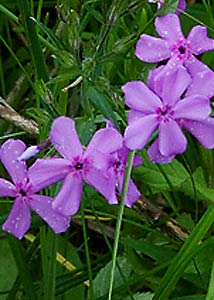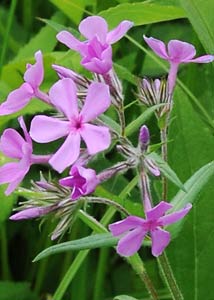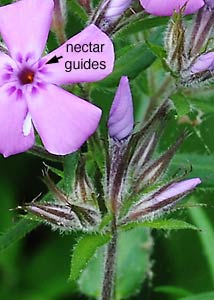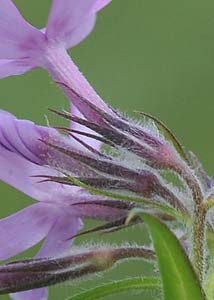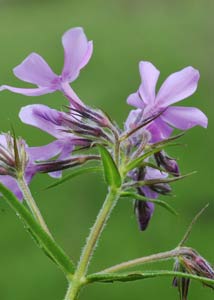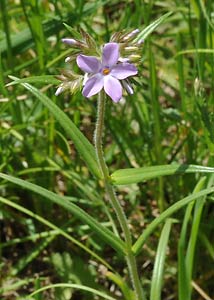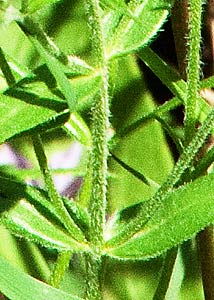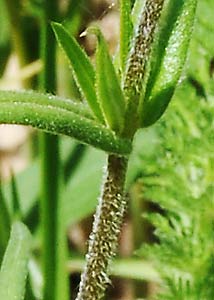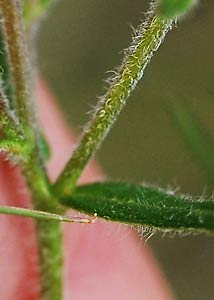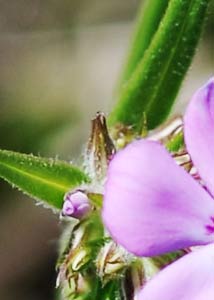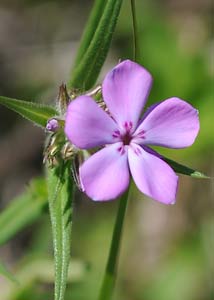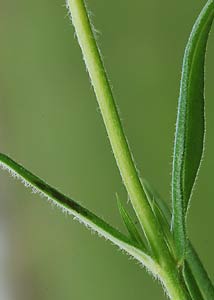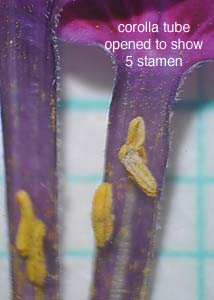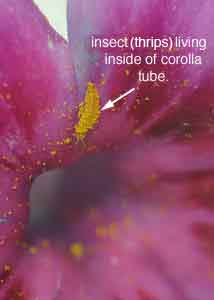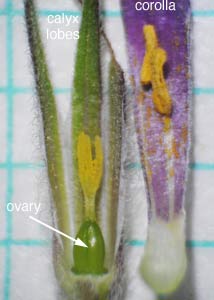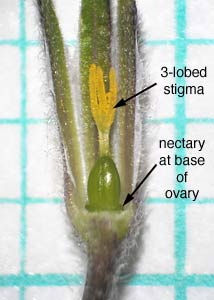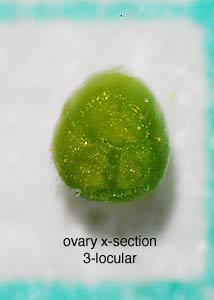
Date: May 18, 2011. Location: Rochester Cemetery (map)
| Classification Hierarchy | |
| Kingdom | Plantae |
| Subkingdom | Tracheophyta |
| Superdivision | Spermatophyta |
| Division | Magnoliophyta |
| Class | Magnoliopsida |
| Subclass | Asteridae |
| Order | Solanales |
| Family | Polemoniaceae |
| Phlox | Phlox |
| Species | Phlox pilosa |

Date: May 18, 2011. Location: Rochester Cemetery (map)
USDA Plant Profile Flora of N. America
Scientific Name: Phlox pilosa (phlox[G] = flame; pilosa = hairy).
Common Name: Downy phlox
Origin: Native
Notes: The epithet pilosa indicates this plant is pilose (hairy). It can be confused with another hairy species in our area (Phlox divaricata). Both species are variable with regard to color and type of pubescence; however, the leaves are generally narrower in P. pilosa so that the longest leaves tend to be more than 5 times as long as wide. For P. divaricata they tend to be less than 5 times as long as wide. Also, at least, in local populations, P. pilosa tends to have dark marks (sometimes called nectar guides) at the base of each petal blade and P. divaricata does not. The pollen covered insect in one of the photos below is probably a thrips.
Additional references: 1, 2, 3, 4, 5, 6, 7, 8, 9, 10, 11, 12.
Flowers: May; corolla color rose to light violet or white; corollas tubular with 5 lobes.
Pubescence: Variable; the plants sampled here show stems, leaves, corolla tube, and calyxes with surface trichomes primarily eglandular and pilose or villous in character.
Leaves: mostly opposite, linear-lanceolate, length more than 5 time width.
Habitat: dry prairies
Glossaries of botanical terms: 1, 2, 3, 4, 5, 6, 7, 8, 9, 10.
